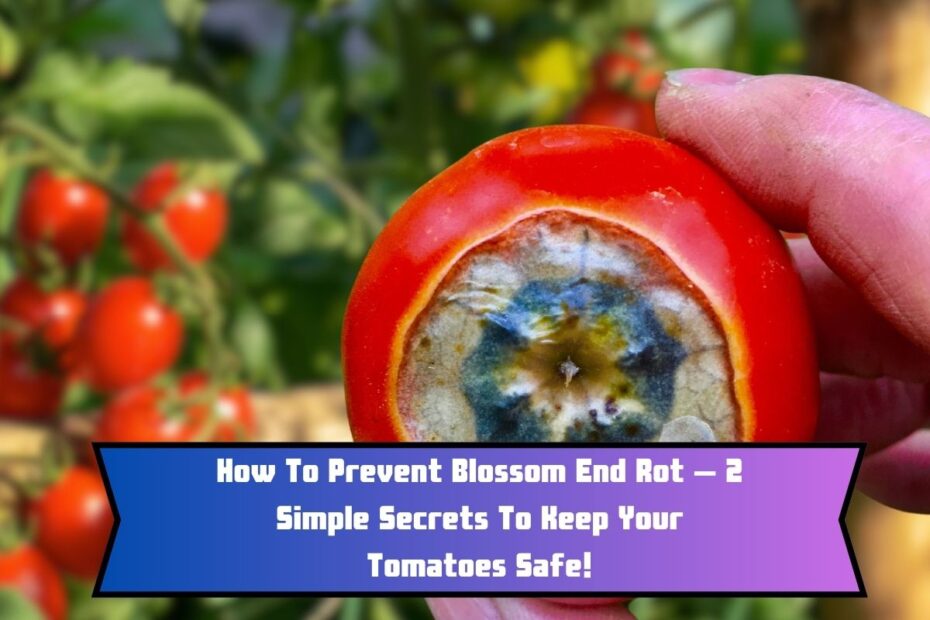One of the most prevalent issues that can occur in tomato plants is called blossom end rot, which manifests as dark, sunken patches at the blossom end of the fruit. This condition is brought on by a calcium deficit in the plant; nevertheless, it is more frequently associated with irregular watering methods than it is with a genuine lack of calcium in the soil. Here are two straightforward strategies that will help you avoid blossom end rot and ensure the safety of your tomatoes:
1. Maintain Consistent Moisture Levels
It is essential to ensure that your tomato plants receive regular hydration in order to prevent blossom end rot, which is one of the most critical aspects in the prevention program. Changes in the moisture content of the soil, particularly when the soil goes from being extremely wet to extremely dry, might hinder the plant from absorbing calcium, even if the calcium is available in the soil.
Tips for Consistent Watering:
Your tomato plants should be watered on a regular basis, with a deep and consistent watering, particularly during periods of drought. Try to get between one and one and a half inches of water every week, either by rainfall or through watering by hand.
Also read:-How To Start Vegetable Plants Indoors From Seeds – The 5 Secrets To Success!
Applying a thick layer of mulch around the base of your tomato plants is an important step in the process. The moisture in the soil is retained by mulch, which helps to maintain its consistency and reduces evaporation. This can be accomplished with shredded leaves, grass clippings, or straw.
The use of a drip irrigation system or soaker hose, which feeds water directly to the root zone and helps maintain stable moisture levels, is something that should be considered.
2. Improve Soil Calcium Availability
In spite of the fact that your soil contains an adequate amount of calcium, it must be easily accessible for the plant to be able to absorb it. This is how you can make sure that your tomato plants receive the calcium that they require:
Tips for Enhancing Calcium Availability:
Prior to planting, it is important to do a soil test in order to determine the amounts of various nutrients, particularly calcium. If your soil is lacking in calcium, you can enhance the amount of calcium in it by amending it with lime or gypsum.
It is important to avoid over-fertilizing since excessive use of nitrogen-rich fertilizers can stimulate rapid growth of the plant’s foliage, which may potentially surpass the plant’s capacity to absorb calcium. Apply the fertilizer in accordance with the specified application rates, using either a balanced fertilizer or one that is specifically prepared for tomatoes.
Calcium Foliar Spray: If your tomatoes are already exhibiting symptoms of blossom end rot, a simple solution is to apply a calcium foliar spray directly to the leaves of the plant. During the time that you are addressing the underlying concerns, this is a temporary remedy that will assist the plant in absorbing calcium.
Conclusion
Maintaining regular moisture levels and ensuring that your soil has adequate calcium availability are two of the most effective strategies to prevent blossom end rot and ensure that your tomatoes continue to be healthy and prolific. Both of these aspects are essential for the success of your tomato plants.
